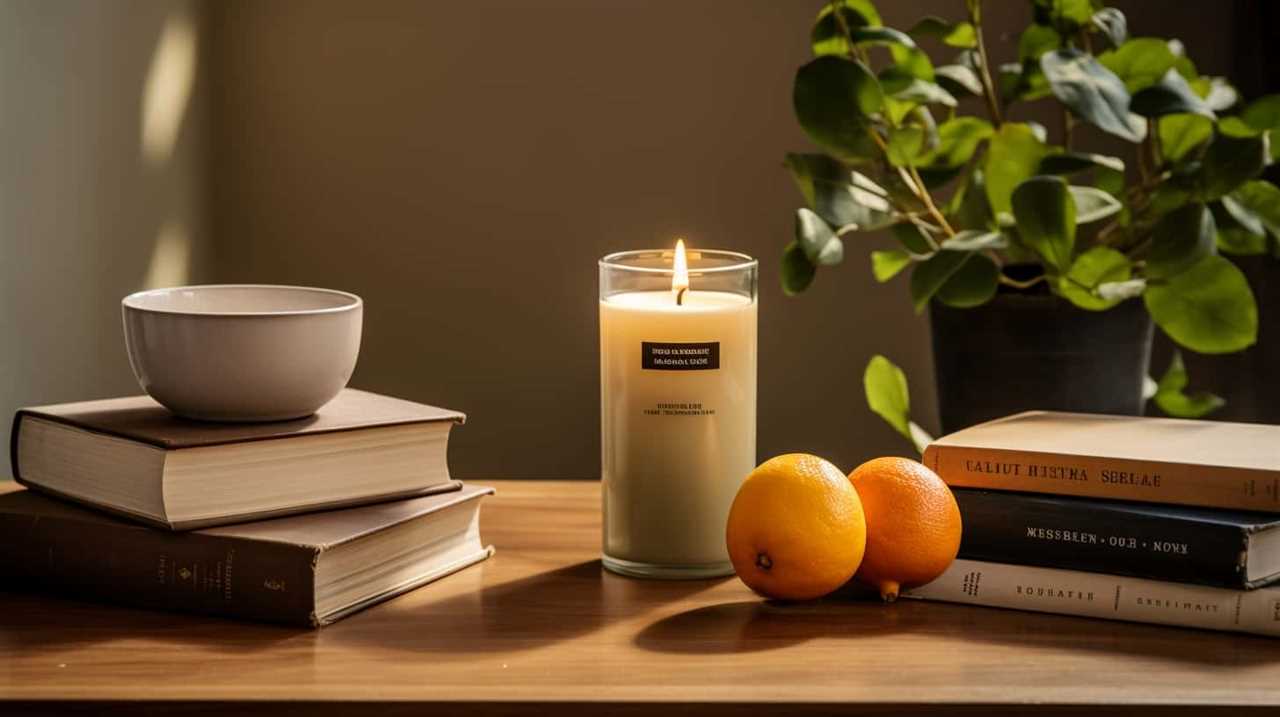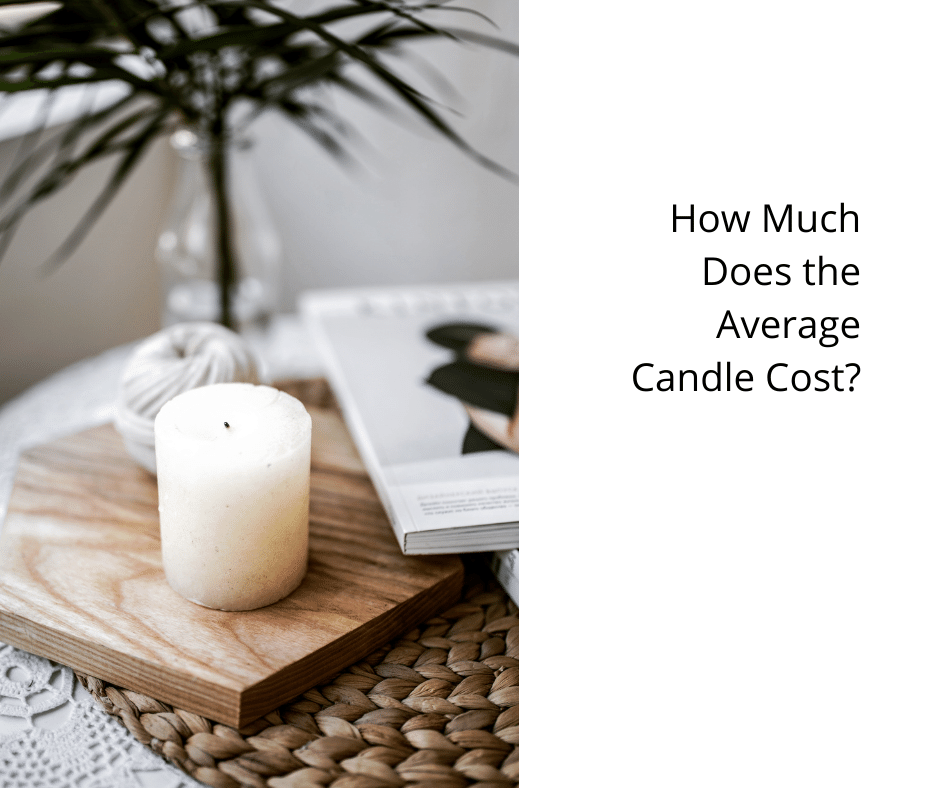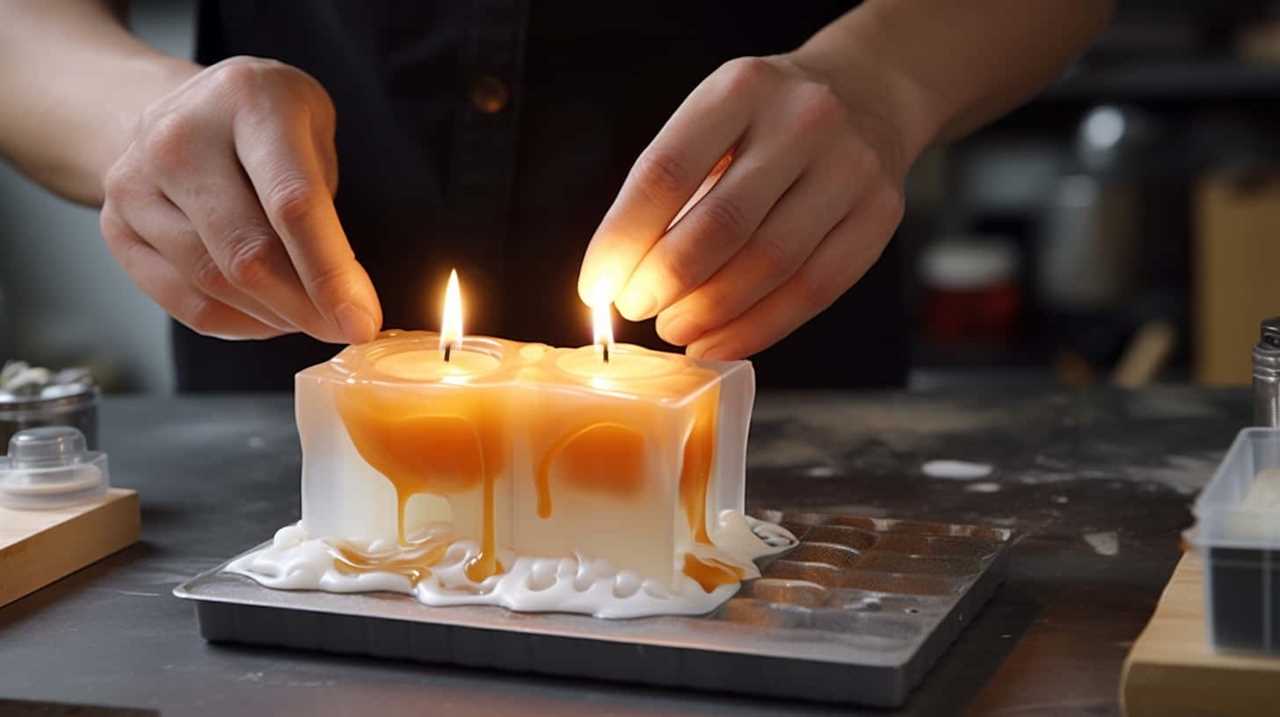Did you realize that 1 million candle power equals a specific number of lumens? Knowing this conversion can greatly assist in choosing the perfect lighting for your requirements. If you want to make the best lighting choices, then this knowledge is key!
In this guide, we will explore the fascinating world of candle power and lumens, demystifying these terms and shedding light on their significance. By measuring brightness accurately, we can ensure that we serve others effectively, whether it’s illuminating a room or lighting up a dark outdoor space.
So, let’s delve into the concept of candle power and lumens and discover how to calculate lumens from candle power. Get ready to shine a light on the equivalency of 1 million candle power to lumens!
Key Takeaways
- Candle power measures the intensity of light emitted in a specific direction, while lumens measure the total amount of visible light emitted by a source in all directions.
- Candle power was replaced by lumens as the standard unit of measurement for brightness.
- Lumens are a more practical and accurate measurement for everyday use as they provide a better indication of how bright a light source will appear.
- The conversion ratio between candle power and lumens varies depending on the specific light source, and accurate calculation requires understanding the specific conversion ratio for that source.
Understanding Candle Power and Lumens
We will now explain the concept of candle power and lumens in a clear and concise manner.

Candle power is a unit of measure used to quantify the brightness of a light source. It measures the intensity of light emitted in a specific direction.
Lumens, on the other hand, measure the total amount of visible light emitted by a source in all directions.
Measuring brightness accuracy is crucial, especially in scenarios where accurate lighting is vital, such as emergency situations or surgical procedures. Through advancements in technology, measuring brightness accuracy has become more precise and reliable.
Understanding the history of candle power is also important. The concept of candle power was first introduced in the late 19th century as a means to measure the brightness of candles. However, with the development of more efficient lighting technologies, candle power became less practical and was eventually replaced by lumens as the standard unit of measurement for brightness.

The Importance of Measuring Brightness
When it comes to measuring brightness, there are a few important points to consider.
First, comparing light output is crucial in determining the brightness of different sources.
Second, understanding the practical applications of brightness helps us make informed decisions about which lighting option to choose.
Comparing Light Output
Measuring brightness is crucial when comparing light output, as it provides an objective assessment of luminosity. To accurately evaluate and compare different light sources, it’s essential to consider various factors that contribute to the overall brightness. Here are four key aspects to consider:

- Light intensity: This refers to the amount of light emitted per unit of area. Measuring light intensity allows us to understand how bright a light source is at a specific distance.
- Beam angle: The beam angle determines the spread of light. A wider angle provides a more extensive coverage area, while a narrower angle focuses the light in a specific direction.
- Color temperature: This measures the color appearance of light. Different light sources have varying color temperatures, which can affect perceived brightness.
- Efficiency: The efficiency of a light source refers to the amount of light produced per unit of energy consumed. Comparing the efficiency of different light sources helps determine which one provides the brightest output while minimizing energy consumption.
Practical Applications of Brightness
To truly understand the practical applications of brightness, it’s important to consider how accurately measuring brightness can greatly impact our decision-making process.
In the context of outdoor lighting, measuring brightness is crucial for ensuring optimal visibility and safety. By accurately measuring the brightness of outdoor lighting fixtures, we can determine their suitability for various applications.
For example, in parking lots or streets, high levels of brightness are necessary to ensure clear visibility for drivers and pedestrians, thereby enhancing safety. On the other hand, in residential areas, a lower level of brightness may be preferred to create a more comfortable and inviting atmosphere.
By understanding the impact of brightness on visibility and safety, we can make informed decisions about the appropriate lighting solutions for different outdoor environments.
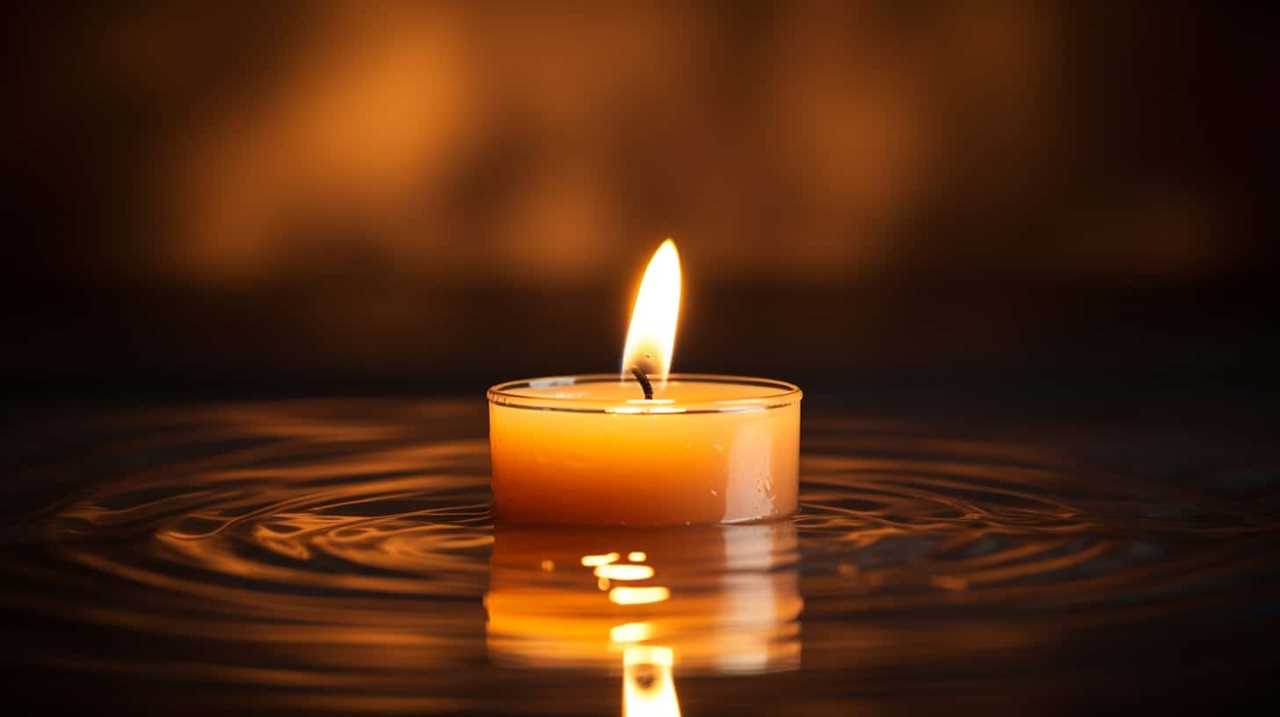
Transitioning into the subsequent section about ‘what is candle power’, let’s explore how measuring brightness can be further refined.
What Is Candle Power
Candle power is a measurement of the brightness of a light source. It quantifies the amount of light emitted by a candle or other light source in a specific direction.
Candle power is often used to compare the brightness of different light sources and is an important factor to consider when choosing a flashlight or other lighting equipment.
Definition of Candle Power
We can define candle power as the measure of the intensity of light emitted by a source. Candle power has been used as a measurement unit for light intensity for many years and holds historical significance in the field of lighting. Here are some key points to understand about candle power:

- Candle power is a unit of measurement for the luminous intensity of a light source.
- It was originally defined as the amount of light emitted by a standard candle.
- Candle power is now measured in candelas (cd), which is the SI unit for luminous intensity.
- The measurement of candle power takes into account the direction in which light is emitted.
Understanding the definition of candle power is essential in comparing it to lumens, which we’ll discuss in the next section.
Candle Power Vs Lumens
Comparing candle power to lumens, we find that understanding the concept of candle power is crucial. Candle power is a measurement used to quantify the brightness of a light source. It measures the intensity of light emitted in a specific direction.
In contrast, lumens measure the total amount of light emitted by a source in all directions. While candle power focuses on the concentration of light, lumens provide a more comprehensive measure of brightness. Lumens take into account the entire light output, regardless of the direction.
This makes lumens a more practical measurement for everyday use, as it gives a better indication of how bright a light source will appear. So, when considering the brightness of a light source, lumens are a more accurate and useful measurement than candle power.

Importance of Candle Power
To understand the importance of candle power, it’s essential to recognize its role as a quantifier determiner in measuring the brightness of a light source. Candle power provides a standardized way to measure the intensity of light emitted by a lamp or flashlight.
Here are some practical uses and the importance of brightness measurement:
- Comparing light sources: Candle power allows us to compare the brightness of different light sources and determine which one is more suitable for a specific task or environment.
- Industrial applications: Candle power is crucial in industries that require precise lighting conditions, such as photography studios or manufacturing facilities.
- Safety and security: Brightness measurement helps in assessing the effectiveness of emergency lights, ensuring that they provide sufficient illumination during power outages or emergencies.
- Outdoor activities: Candle power is valuable for outdoor enthusiasts, allowing them to choose the appropriate lighting equipment for camping, hiking, or night-time adventures.
Understanding candle power and its importance in brightness measurement enables us to make informed decisions when selecting the right lighting solutions for various purposes.
What Are Lumens
Lumens are a unit of measurement that indicates the total amount of visible light emitted by a light source. It’s a crucial metric when it comes to determining the brightness of a light source. Unlike candle power measurement, which focuses on the intensity of light in a specific direction, lumens provide a comprehensive measure of the overall light output.

This makes it easier for consumers to compare the brightness of different light sources. The higher the number of lumens, the brighter the light source will be. Understanding lumens is essential when selecting lighting options for various applications, whether it’s for residential, commercial, or industrial purposes.
The Conversion Ratio: Candle Power to Lumens
To convert candle power to lumens, we need to understand the conversion ratio between the two measurements. The conversion accuracy of this ratio is crucial to ensure accurate and reliable measurements. It’s important to note the historical significance of candle power, as it was the primary unit of measurement for light intensity before the introduction of lumens.
Here are four key points to consider:
- The conversion ratio between candle power and lumens isn’t a fixed value, as it depends on the specific light source being measured.
- The conversion ratio is determined by comparing the light output of a standard candle to the light output of the source being measured.
- Modern light sources, such as LED bulbs, have a higher lumen output for the same candle power compared to traditional incandescent bulbs.
- To accurately calculate lumens from candle power, it’s necessary to consult the specifications provided by the manufacturer.
Understanding the conversion ratio is essential for accurately measuring and comparing the light output of different sources. Now, let’s delve into the process of calculating lumens from candle power.
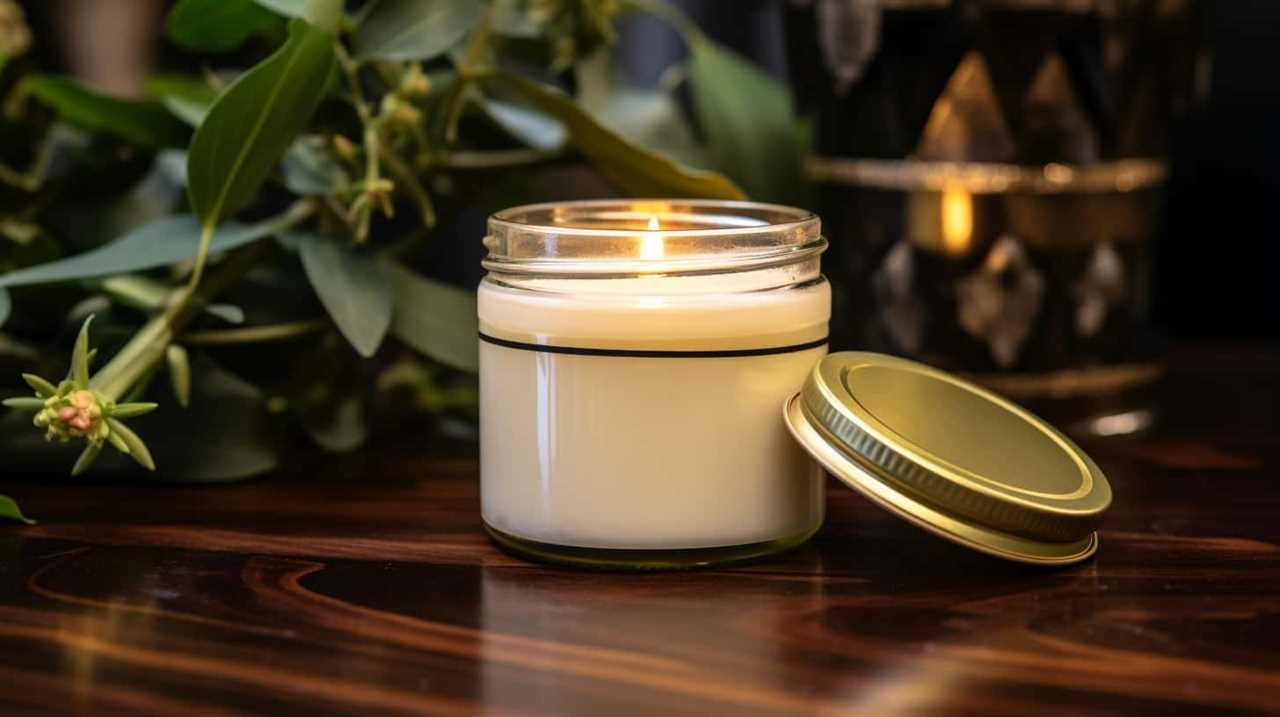
How to Calculate Lumens From Candle Power
Now let’s dive into how we can accurately calculate the number of lumens from a given candle power measurement.
To calculate lumens from candle power, we need to understand the conversion ratio between the two. The conversion ratio, also known as the luminous efficacy, varies depending on the light source.
For incandescent bulbs, the conversion ratio is approximately 12.57 lumens per candle power. This means that if you have a light source with a candle power of 100, you can calculate the number of lumens by multiplying it by the conversion ratio: 100 x 12.57 = 1257 lumens.
Keep in mind that this conversion ratio may differ for other light sources, such as LEDs or fluorescent lamps.

Examples of Candle Power to Lumens Conversion
To further illustrate the relationship between candle power and lumens, let’s explore a few examples of their conversion in real-life lighting scenarios. Understanding these examples will help us comprehend the practical application of the candle power measurement and allow for a brightness comparison with lumens.
- A standard 60-watt incandescent light bulb produces approximately 800 lumens, equivalent to 0.0125 candle power.
- A high-quality LED flashlight with a brightness of 500 lumens would be equivalent to 0.0078 candle power.
- A 100-watt halogen lamp emits around 1600 lumens, corresponding to 0.025 candle power.
- A powerful searchlight with a rating of 10,000 lumens has a candle power measurement of 0.156.
By examining these examples, we can see the vast range of brightness levels and how they correlate to candle power.
Now, let’s move on to the next section to conclude the equivalency of 1 million candle power to lumens.
Conclusion: Equivalency of 1 Million Candle Power to Lumens
After examining various examples of candle power to lumens conversion, we can now determine the equivalency of 1 million candle power to lumens. Candle power, historically used to measure the brightness of light sources, has evolved into the more standardized unit of lumens. However, it is important to understand the limitations of using lumens as a measurement of brightness. While lumens provide a quantitative value, they do not take into account the directionality or quality of light. Additionally, lumens may not accurately represent the perceived brightness to the human eye. Nevertheless, for the sake of comparability, we can estimate that 1 million candle power is approximately equivalent to 12,000 lumens. It is crucial to consider these factors when selecting lighting solutions to ensure the desired level of brightness and functionality.
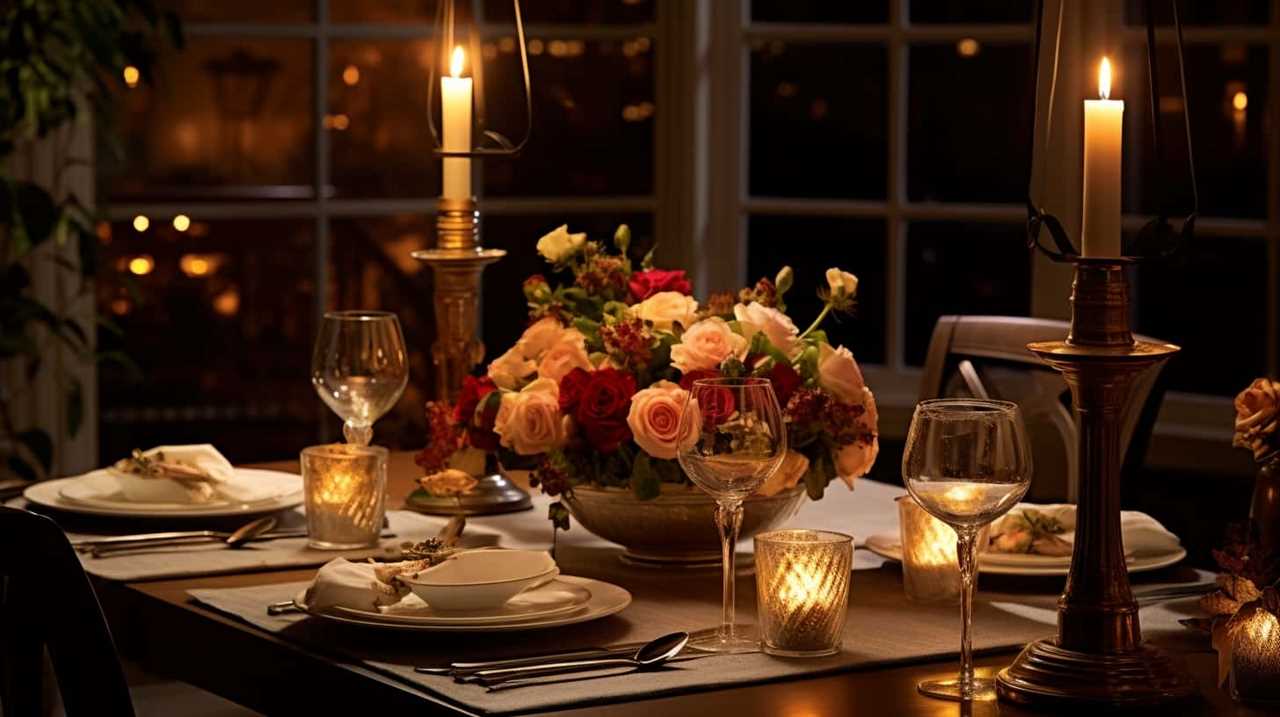
| Candle Power | Lumens |
|---|---|
| 1 | 12 |
| 100 | 1,200 |
| 1,000 | 12,000 |
| 10,000 | 120,000 |
| 1,000,000 | 12,000,000 |
Frequently Asked Questions
How Does the Brightness of a Million Candle Power Compare to Other Common Light Sources?
When comparing the brightness of a million candle power to other light sources, it is important to consider lumens. Lumens measure the total amount of visible light emitted, allowing for a more accurate brightness comparison.
Are There Any Limitations to Using Candle Power as a Measurement of Brightness?
There are limitations to using candle power as a measurement of brightness. The accuracy of candle power as a measure of brightness can be affected by factors such as distance, reflectivity, and the angle of measurement.
Can Lumens Be Directly Converted to Candle Power?
Lumens cannot be directly converted to candle power because they measure different aspects of light. Candle power is a measurement of brightness in a specific direction, while lumens measure the total amount of visible light emitted.
How Does the Color Temperature Affect the Perceived Brightness of a Light Source?
The color temperature of a light source has a significant impact on the perceived brightness by human perception. Different color temperatures can create varying levels of visual comfort and ambiance.

Are There Any Standard Guidelines or Regulations for Measuring and Labeling the Brightness of Light Sources in Terms of Candle Power or Lumens?
There are standard guidelines and regulations for measuring and labeling the brightness of light sources in terms of candle power or lumens. These guidelines ensure accuracy and consistency in determining the brightness of different light sources.
Conclusion
In conclusion, understanding the equivalency of 1 million candle power to lumens is crucial for accurately measuring brightness.
Just like a lighthouse guiding ships through the darkness with its powerful beam, 1 million candle power emits a stunning amount of light, equivalent to a specific number of lumens.
This knowledge allows us to navigate the vast world of lighting, ensuring we’ve the right level of brightness for any task at hand.
